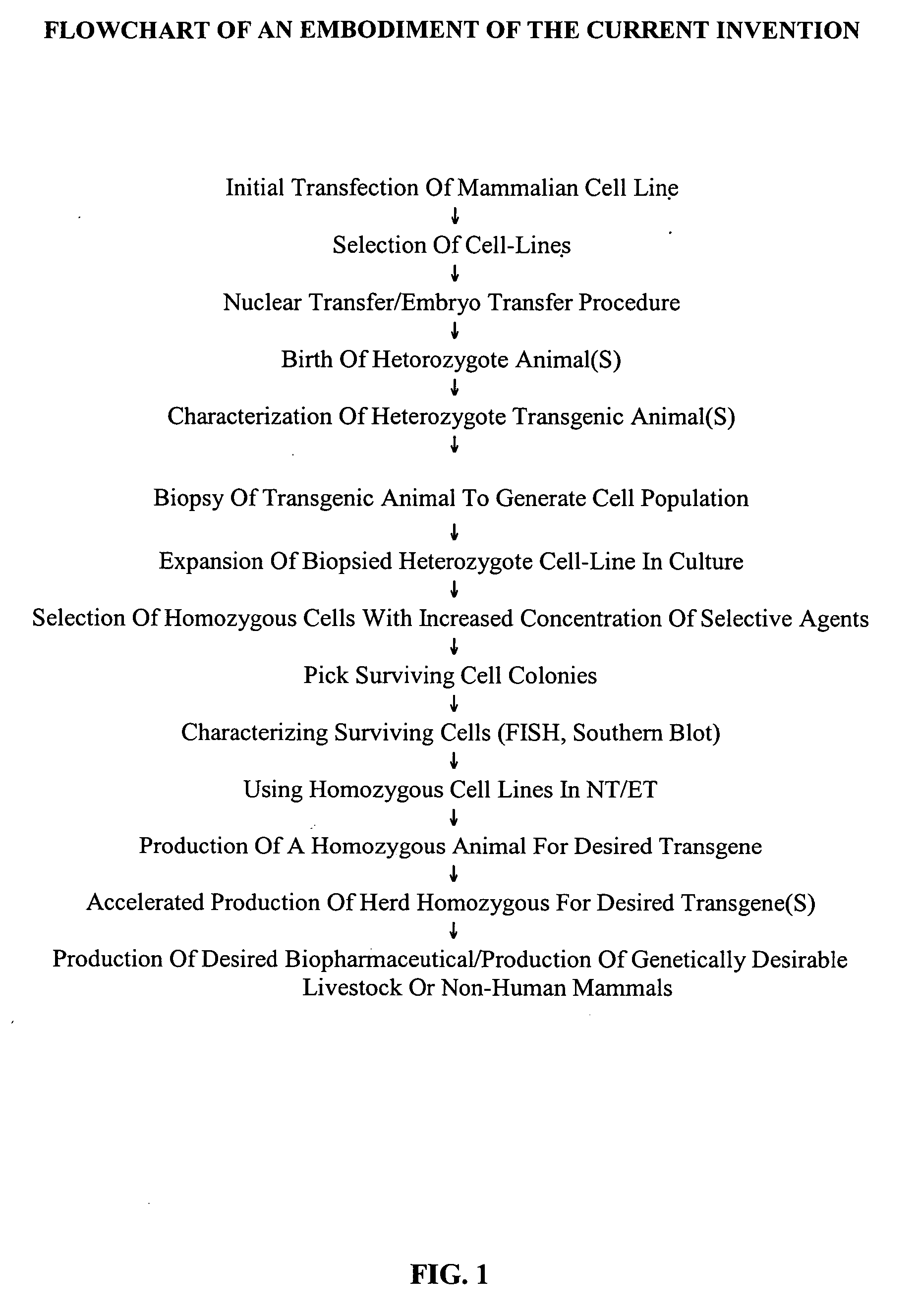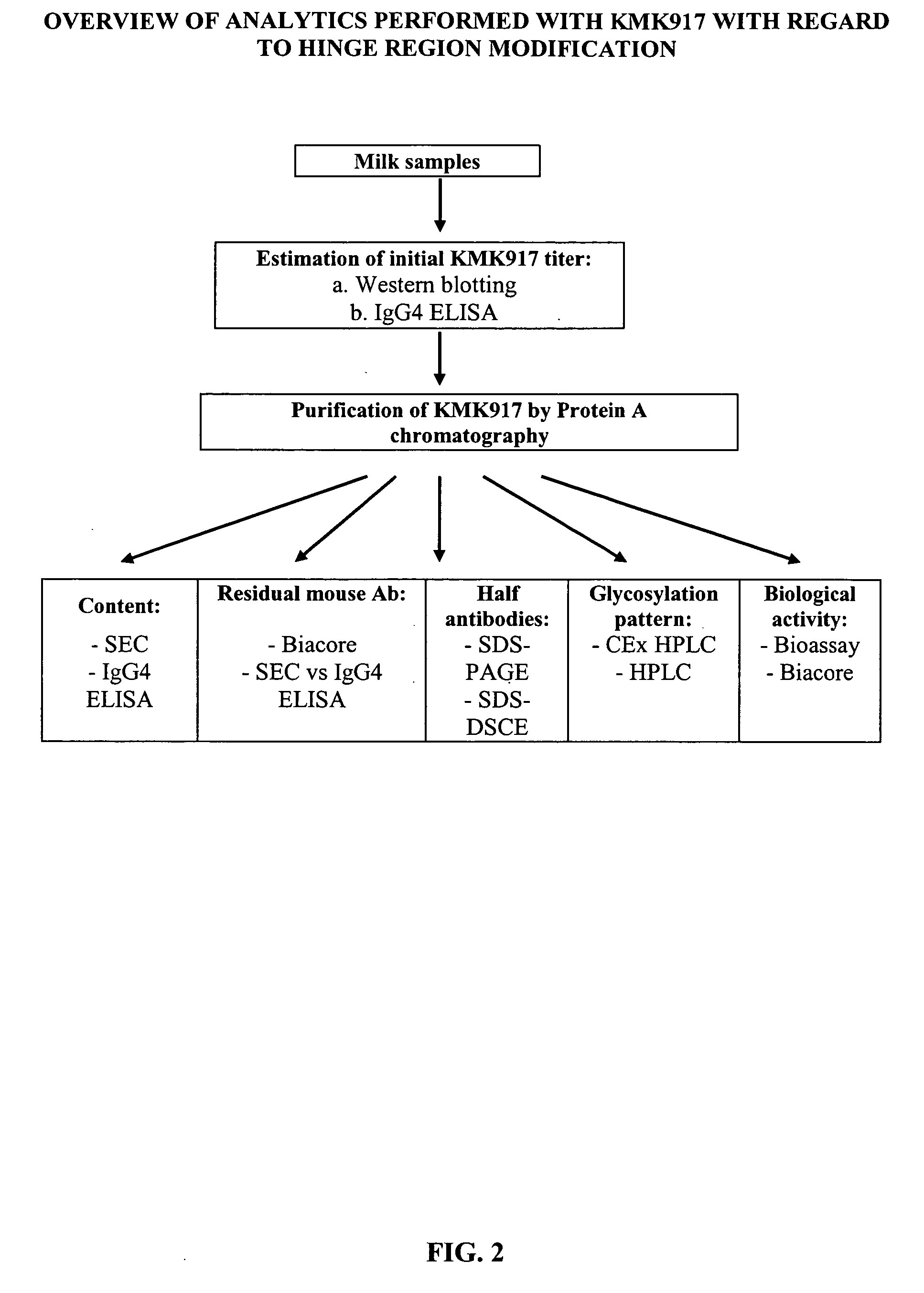Modified antibodies stably produced in milk and methods of producing same
- Summary
- Abstract
- Description
- Claims
- Application Information
AI Technical Summary
Benefits of technology
Problems solved by technology
Method used
Image
Examples
example 1
Modification of Antibodies
[0151] An antibody heavy chain can be modified using oligonucleotide mutagenesis. Briefly, the desired DNA is altered by hybridizing an oligonucleotide encoding a mutation to a DNA template, where the template is the single-stranded form of a plasmid or bacteriophage containing the unaltered or native DNA sequence of the desired protein. After hybridization, a DNA polymerase is used to synthesize an entire second complementary strand of the template that will thus incorporate the oligonucleotide primer, and will code for the selected alteration in the desired protein DNA. Generally, oligonucleotides of at least 25 nucleotides in length are used. An optimal oligonucleotide will have 12 to 15 nucleotides that are completely complementary to the template on either side of the nucleotide(s) coding for the mutation. This ensures that the oligonucleotide will hybridize properly to the single-stranded DNA template molecule. The oligonucleotides are readily synthe...
example 2
Mouse Model of Antibody Hinge Region Change
[0171] To check the feasibility of production of recombinant therapeutic antibodies in transgenic animals, the cDNA for the antibody KMK917 was expressed in the mammary gland of transgenic mice. KMK917 was then purified from mouse milk and compared to KMK917 derived from fed batch fermentation of KMK917-transfected Sp2 / 0 cells. KMK917-transgenic mice were generated at GTC Biotherapeutics, Inc., in Framingham, Mass., The subsequent purification and analytical characterization were performed by a sub-contractor.
Generation of KMK917 Transgenic Mice
[0172] The KMK917 coding constructs were generated: [0173] 1. 1099 / 2010 coding for KMK917 wild type [0174] 2. 2012 / 2017 coding for KMK917 hinge mutant (229 Ser→Pro) [0175] 3. 2012 / 2017 coding for KMK917 hinge+Ch2 mutant (229 Ser→Pro,
[0176] The mutant constructs were generated with the purpose to reduce the portion of half antibodies observeed in KMK917 material derived from the wild type constru...
PUM
| Property | Measurement | Unit |
|---|---|---|
| Fraction | aaaaa | aaaaa |
| Volume | aaaaa | aaaaa |
| Volume | aaaaa | aaaaa |
Abstract
Description
Claims
Application Information
 Login to View More
Login to View More - R&D
- Intellectual Property
- Life Sciences
- Materials
- Tech Scout
- Unparalleled Data Quality
- Higher Quality Content
- 60% Fewer Hallucinations
Browse by: Latest US Patents, China's latest patents, Technical Efficacy Thesaurus, Application Domain, Technology Topic, Popular Technical Reports.
© 2025 PatSnap. All rights reserved.Legal|Privacy policy|Modern Slavery Act Transparency Statement|Sitemap|About US| Contact US: help@patsnap.com



